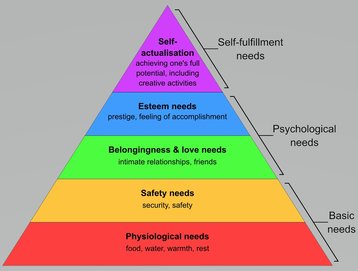Big Data refers to the high volume, velocity, and variety of information assets. The industry emerged from the explosive growth of data resulting from the digitization of our society and has been a critical driver of related technologies, infrastructure, and services.
Big data innovation is driving growth in all industries and sectors, and the momentum continues to increase. Some entities are growing faster than others, and much of this depends on how effectively they integrate and use data in their operations. This is typically referred to as data maturity and can be viewed within the context of the Big Data Maturity Model.
The Big Data Maturity Model provides the evolutionary framework
The Big Data Maturity Model is a framework outlining the use of data to develop technology platforms and processes aligned with an organization’s goals.
Data maturity models are much more than just frameworks. They have been compared to a prominent psychological model of human behaviour known as Maslow’s Hierarchy of Needs, pioneered by Abraham Maslow - an eminent 20th-century psychologist.
Data maturity goals have a similar trajectory. Each stage is critically dependent on the previous level, encompassing critical infrastructure, technology and human resource decisions that integrate data into each department.
Goals of The Data Maturity Model
At the very top of the data maturity model is an organization that has fused data with efficiency into all its operations with goals that include:
- Assessing the capabilities and ultimate potential for the use of data in critical areas of the organization
- Identifying, developing, and guiding milestones, objectives, and goals
- Building data capabilities within the organizational infrastructure
- Improving productivity, efficiency, and overall success of all organizational activities
- Risk assessment and prevention of data-related operational issues
Stages of Data Maturity Models
There are five main stages of data maturity models widely cited in the industry. While they go by different names, they all typically describe the same stages of development that include:
Stage 1: Inception/Discovery
Organizations in the discovery stage are aware of Big Data and its potential to add value to the business. During this stage, decisions are being made to upgrade processes, employees, and infrastructure. Moving forward with success requires extensive research and strategic decision-making.
Stage 2: Startup/Pre-Adoption
This is the phase where organizations are continuing research while creating strategic goals and objectives. Alongside their research, organizations in this phase are making plans to design and implement the initial infrastructure aligned with their goals while reviewing use cases that extend beyond this stage and into the future.
Stage 3: Practical Adoption
This is the phase of early adoption where one or two projects or prototypes (also referred to as proofs of concept or POCs) have moved along the production line and are getting ready to go. This is a critical stage that bridges the adoption of big data analytics from one area to others across the organization.
Stage 4: Strategic Integration
This stage is characterized by corporate adoption. It’s a critical crossover phase where additional significant insights are gained, employees get involved in the process, and widespread transformation occurs in workflows throughout the organization. The use of analytics at this stage typically enhances decision-making by managers throughout the organization concerning performance gaps, infrastructure, and governance.
Stage 5: Optimized/Visionary
This is the “peak” of the maturity model pyramid. Here the organization is executing big data operations with high-level efficiency using optimized infrastructure according to strategic objectives aligned with its goals.
Big data is a critical part of the entity’s activities at this stage and is initiated, budgeted, and planned throughout the organization.
Where is your organization on the data maturity model?
Whether your organization is in the foundational stages or rising to the top of the model, significant gains can be made on every level. The first step is to explore how data can positively impact every level of your organization. The next step is to learn how to collect data through purchased data sets or web scraping, and using that information to enhance decision making, pricing strategies, marketing plans, and more.
Implementing maturity models allows organizations to accurately gauge the current data environment within the company. After an assessment, a prescriptive maturity model can be used to acquire concrete growth opportunities. Finally, benchmarking one organization against another in the same industry may allow for even more growth.
All of these steps, implemented through data maturity models, have numerous benefits. Over time, key strategic initiatives can be defined, enabled, and achieved more effectively. In addition, each department and project will be data-involved, improving overall performance on several organizational levels. Finally, being data-involved grants the organization access to better agility when required.



